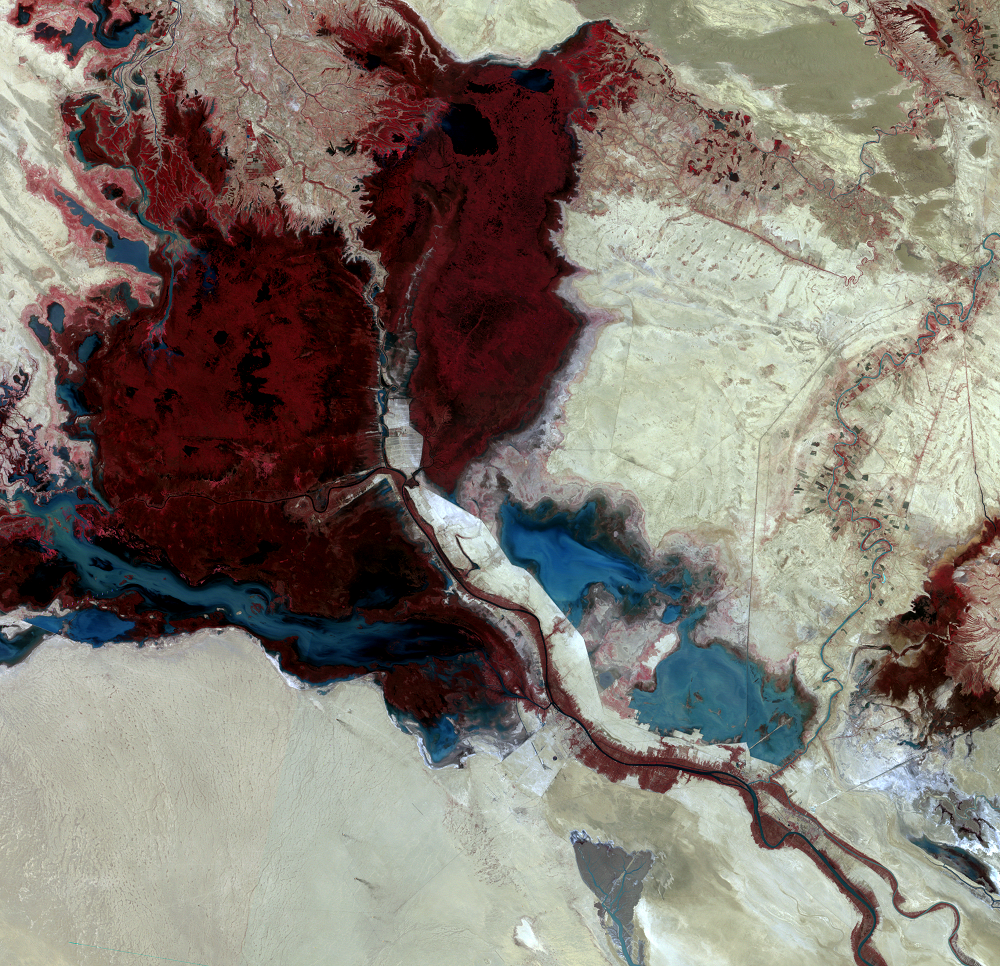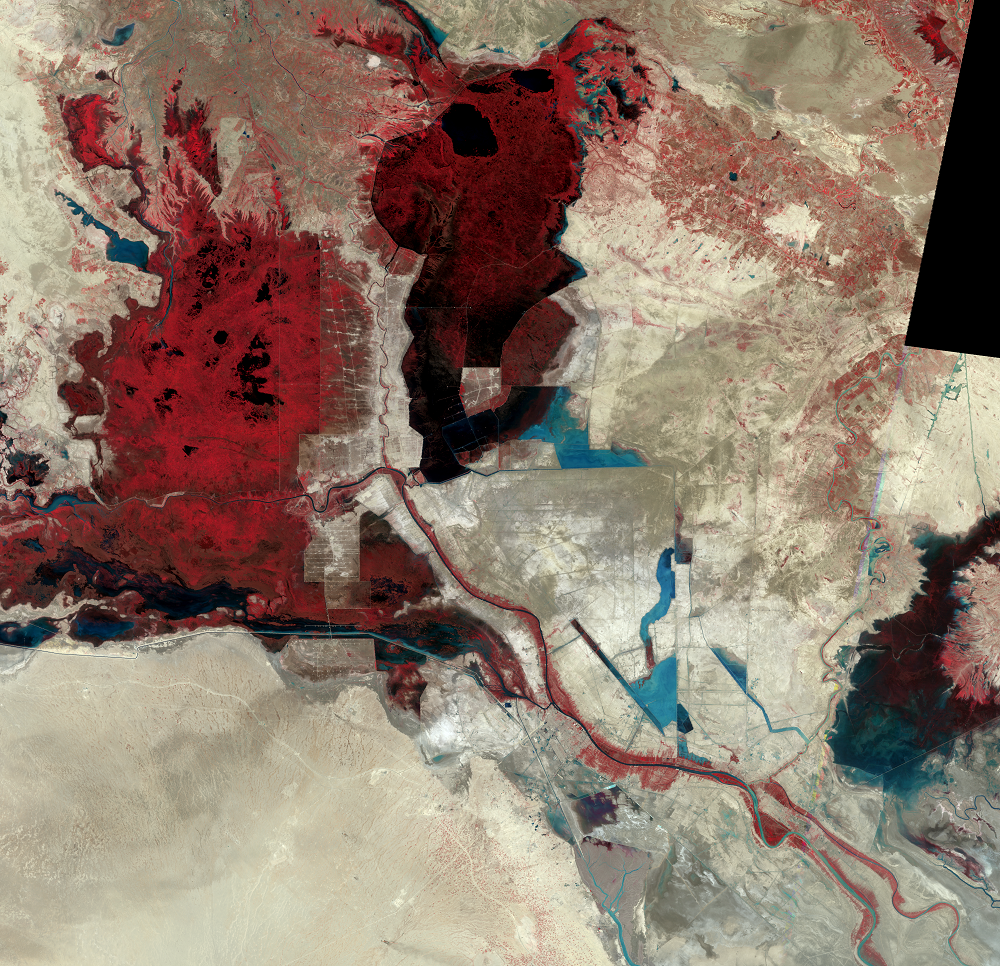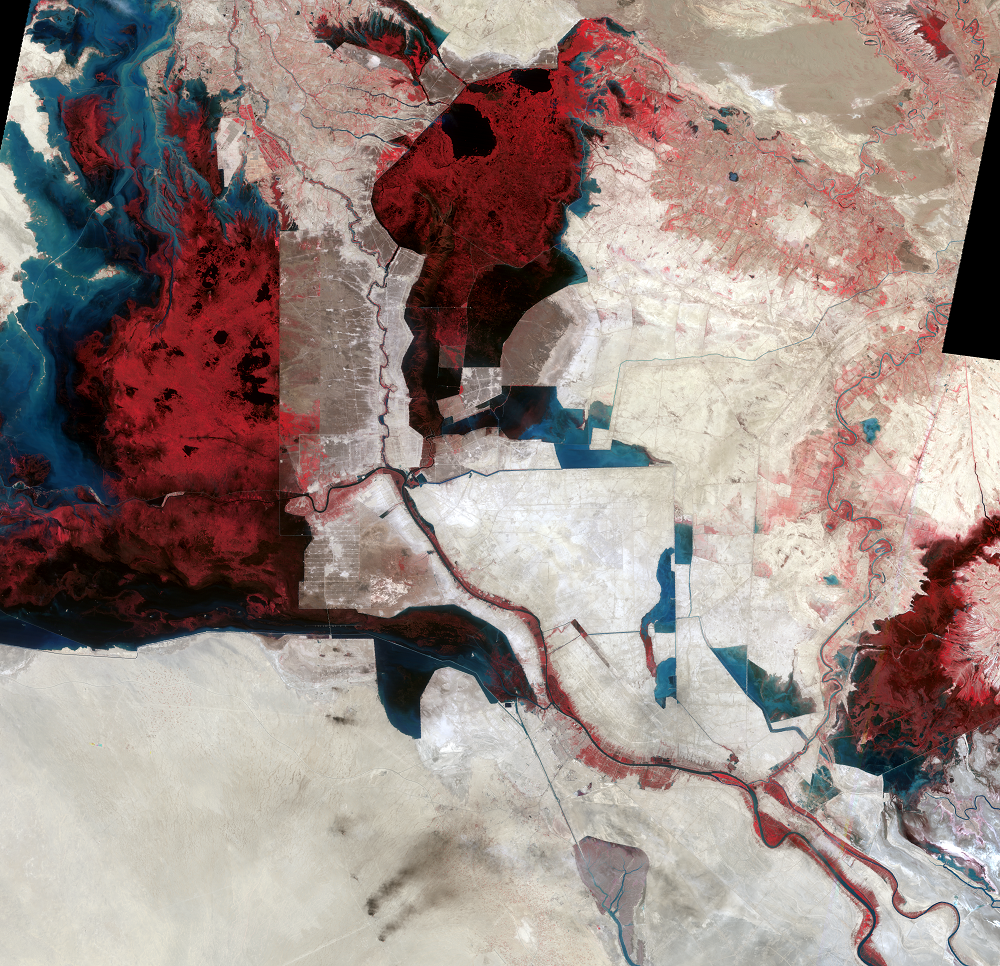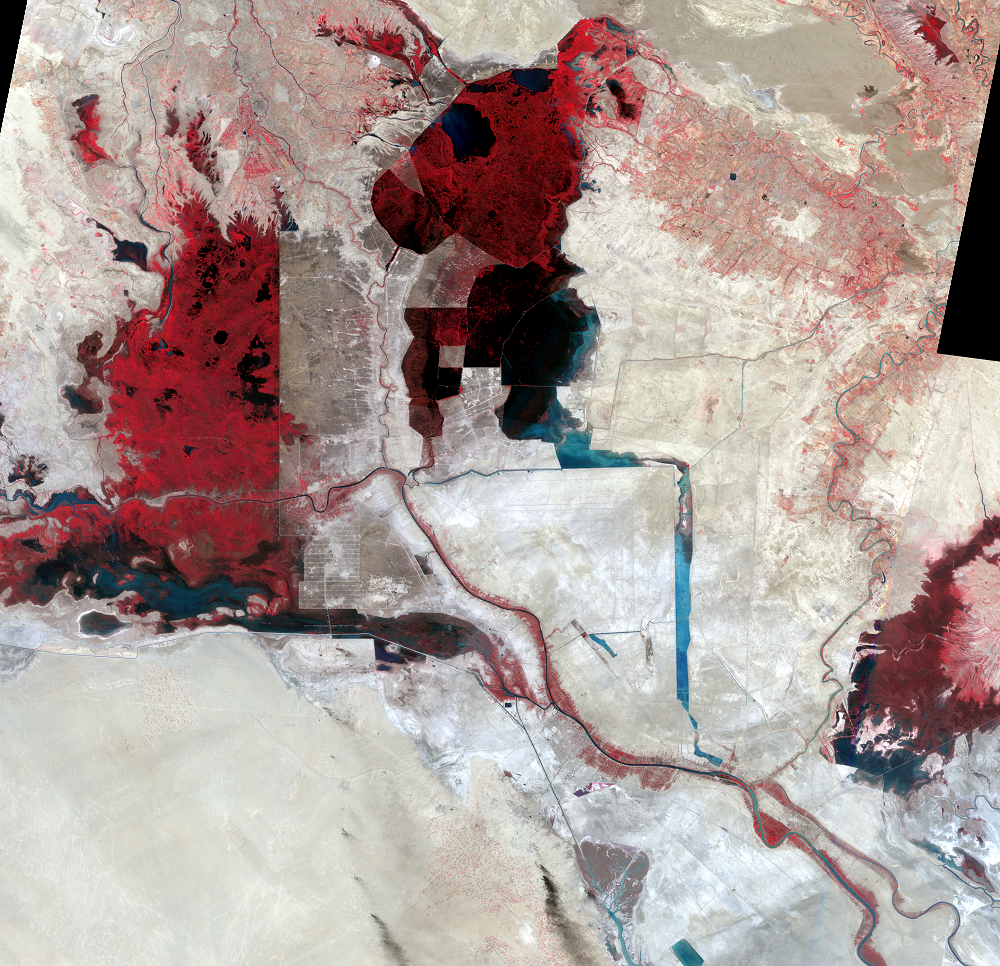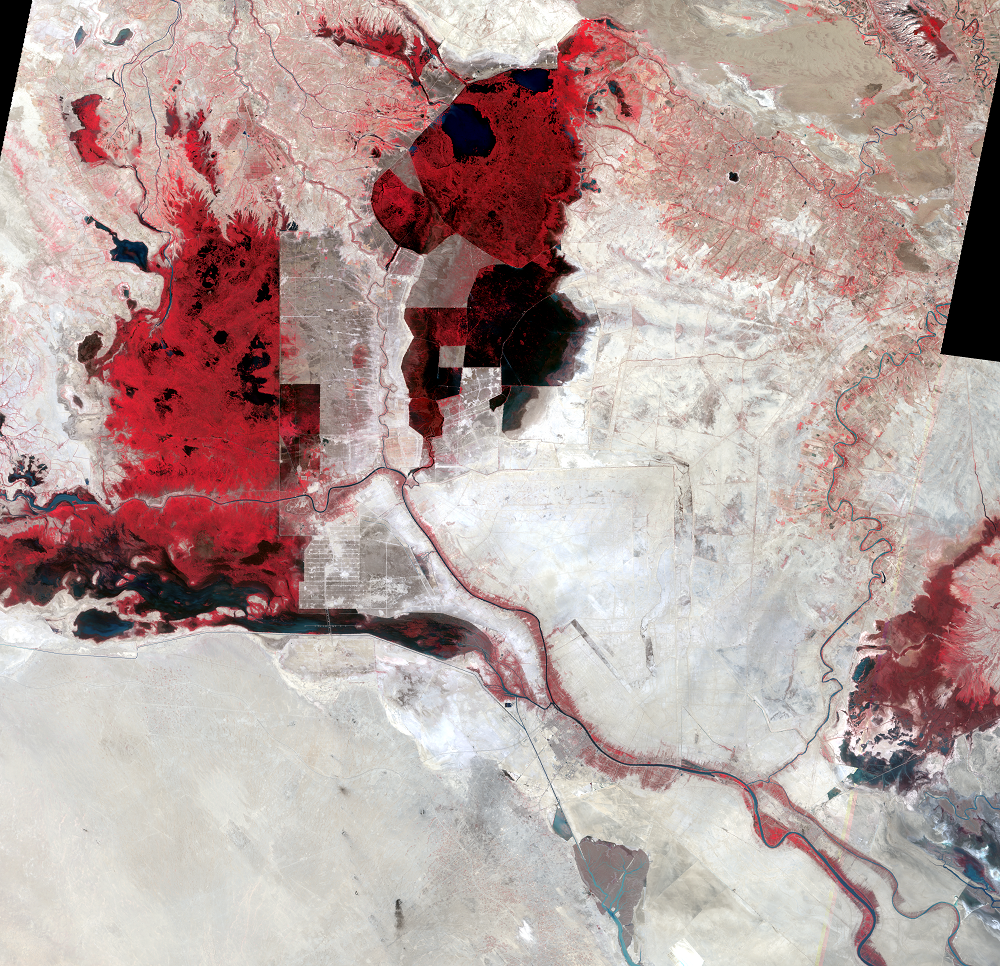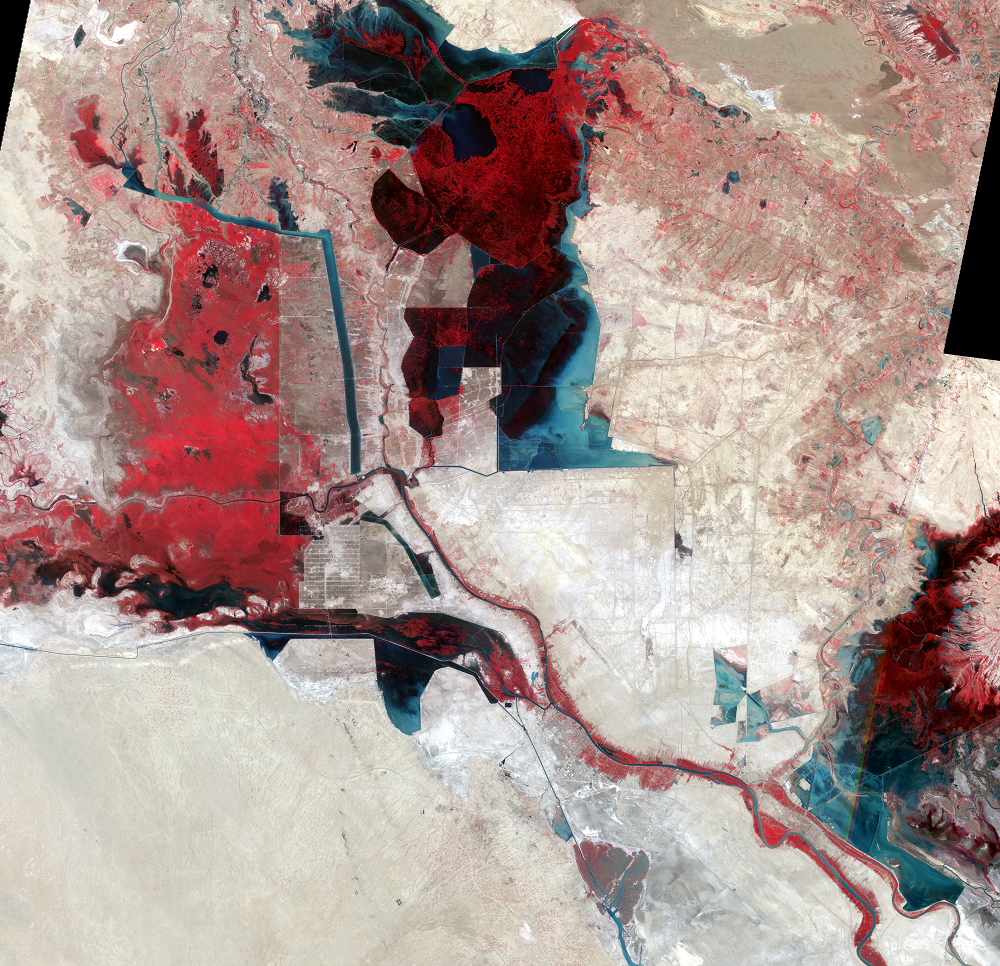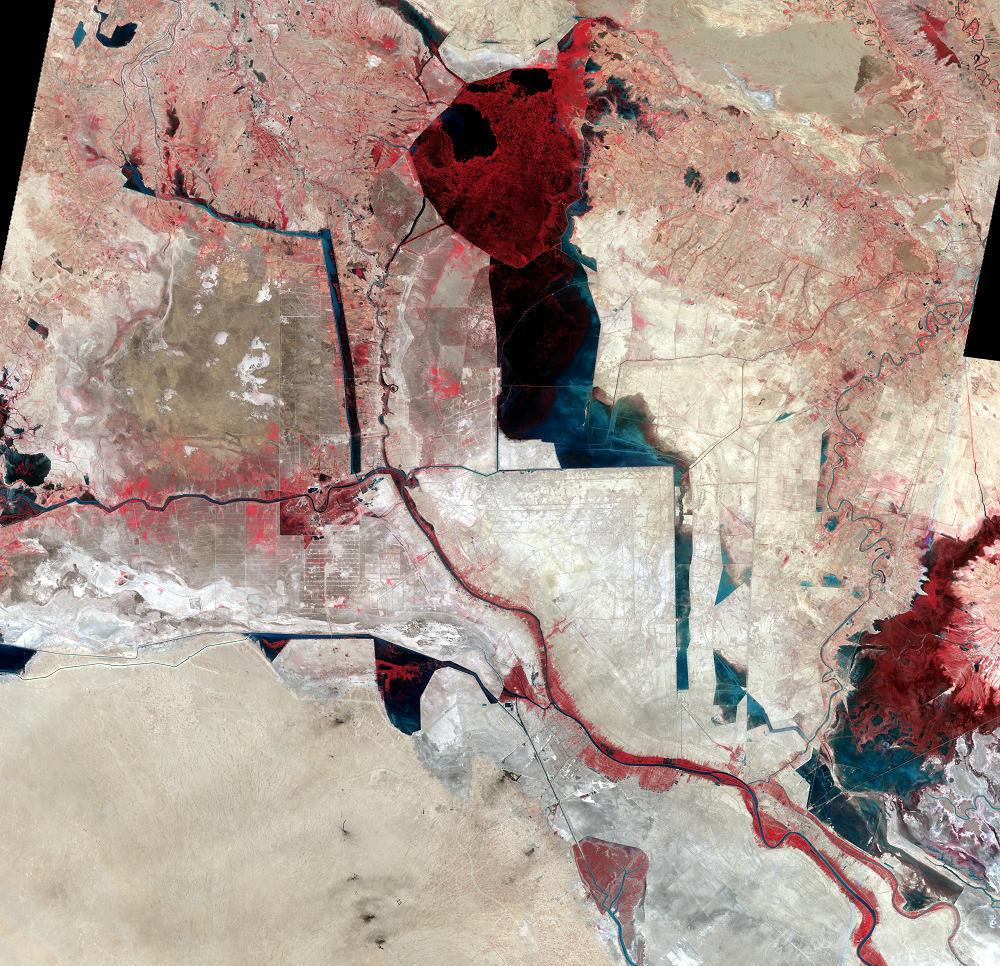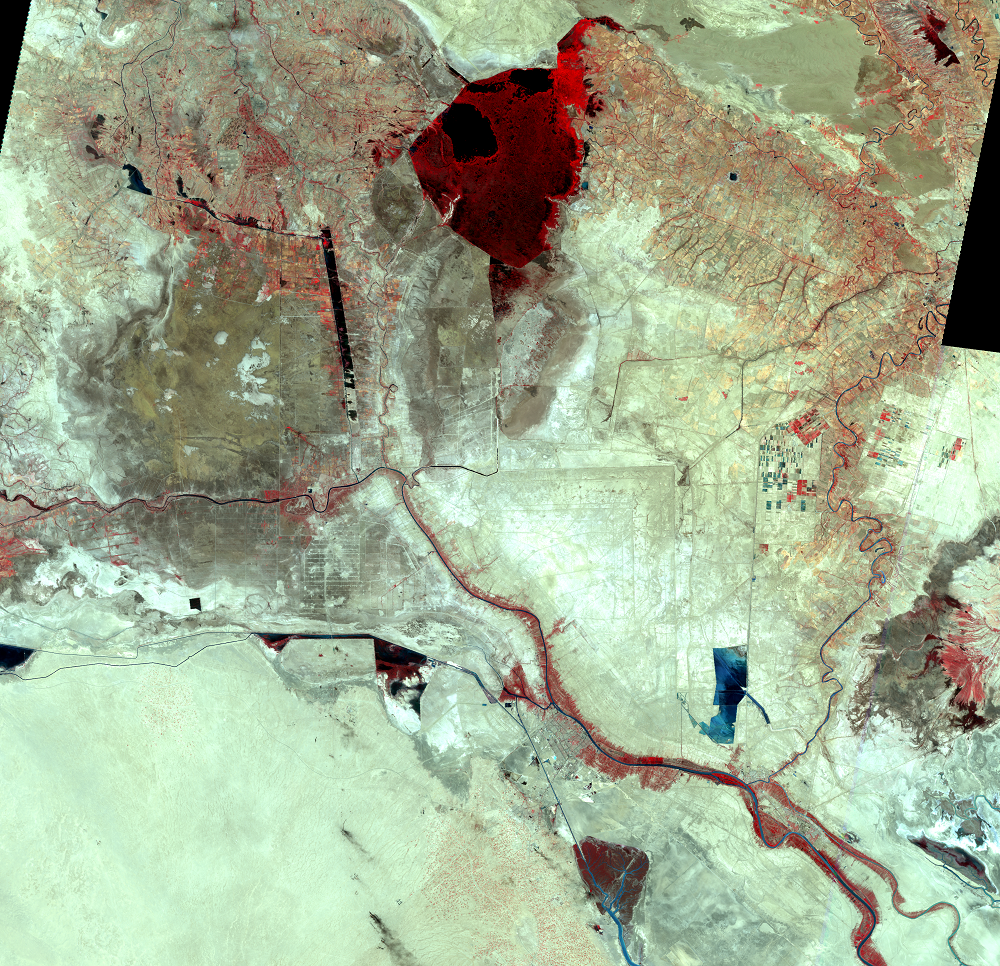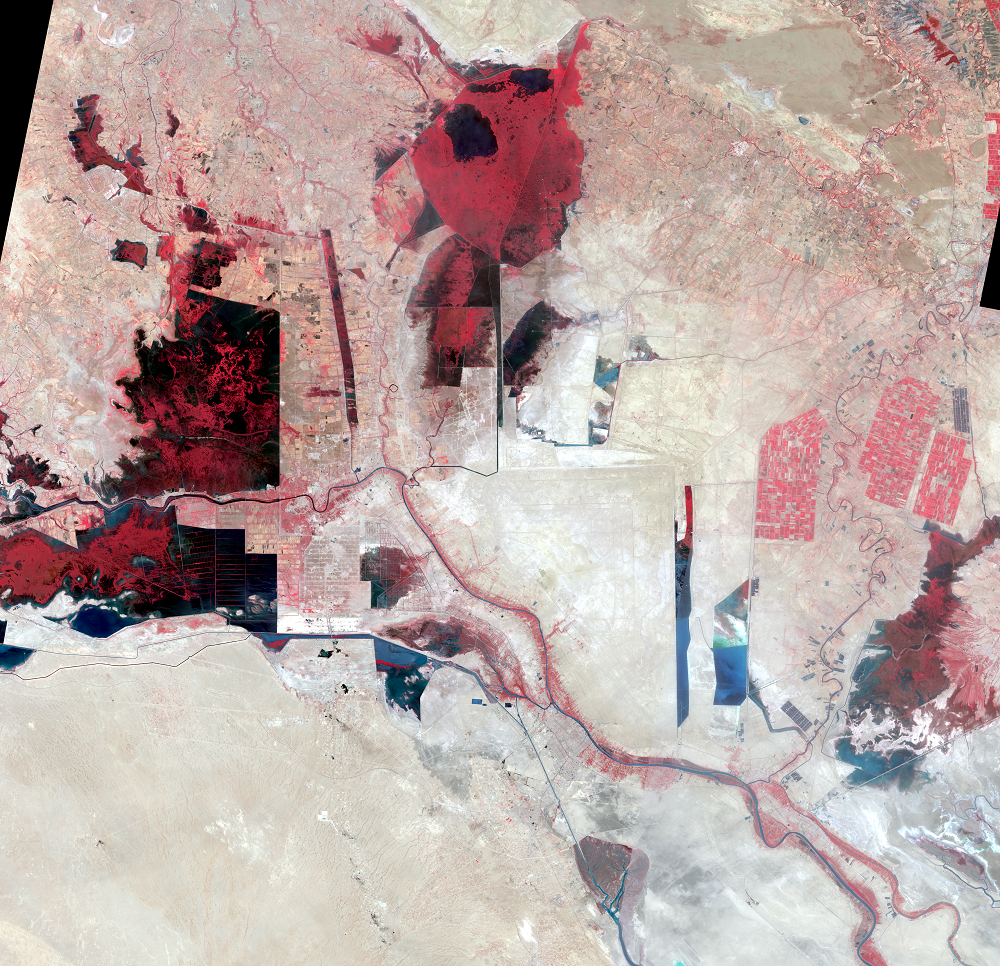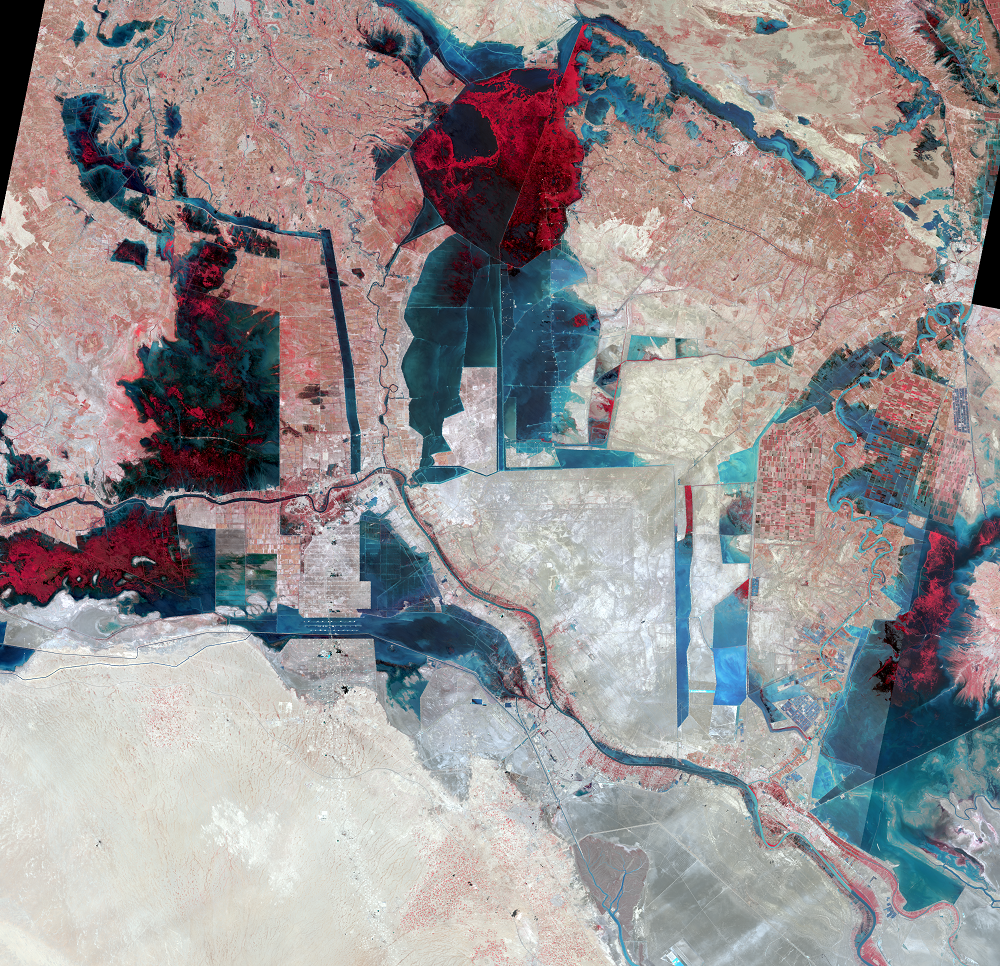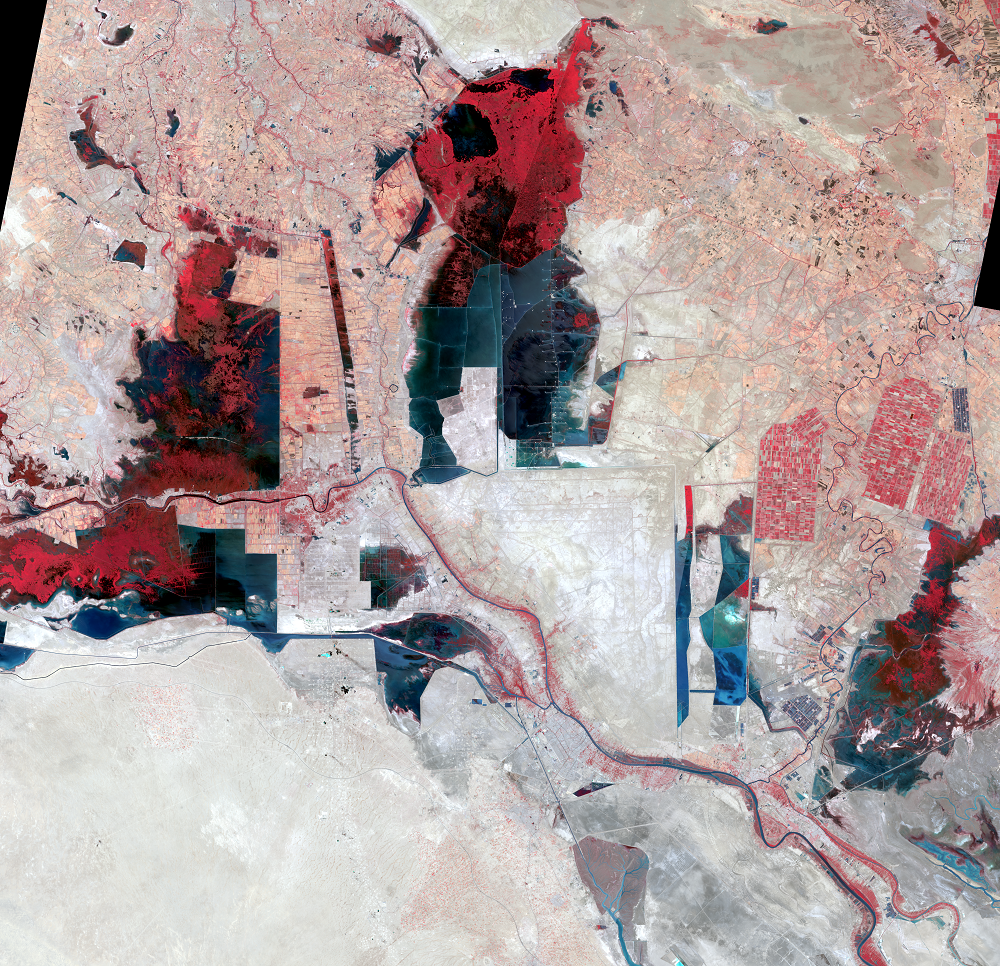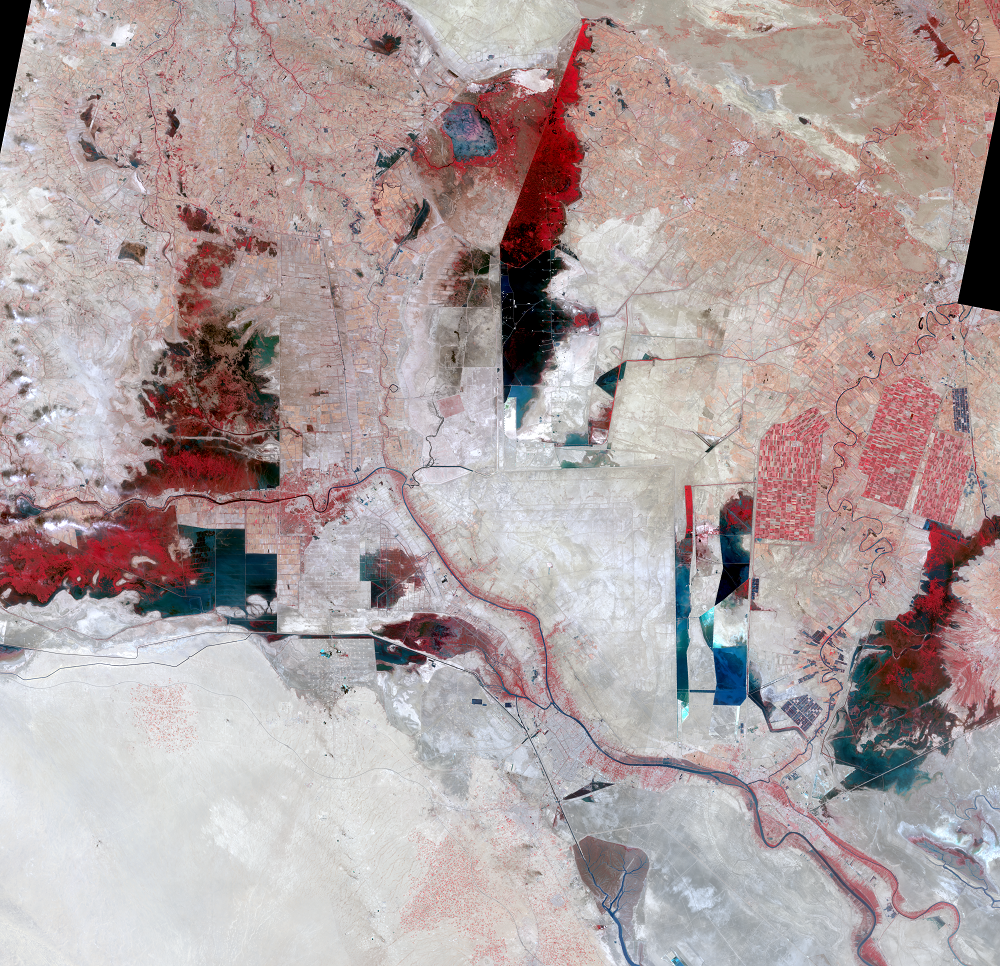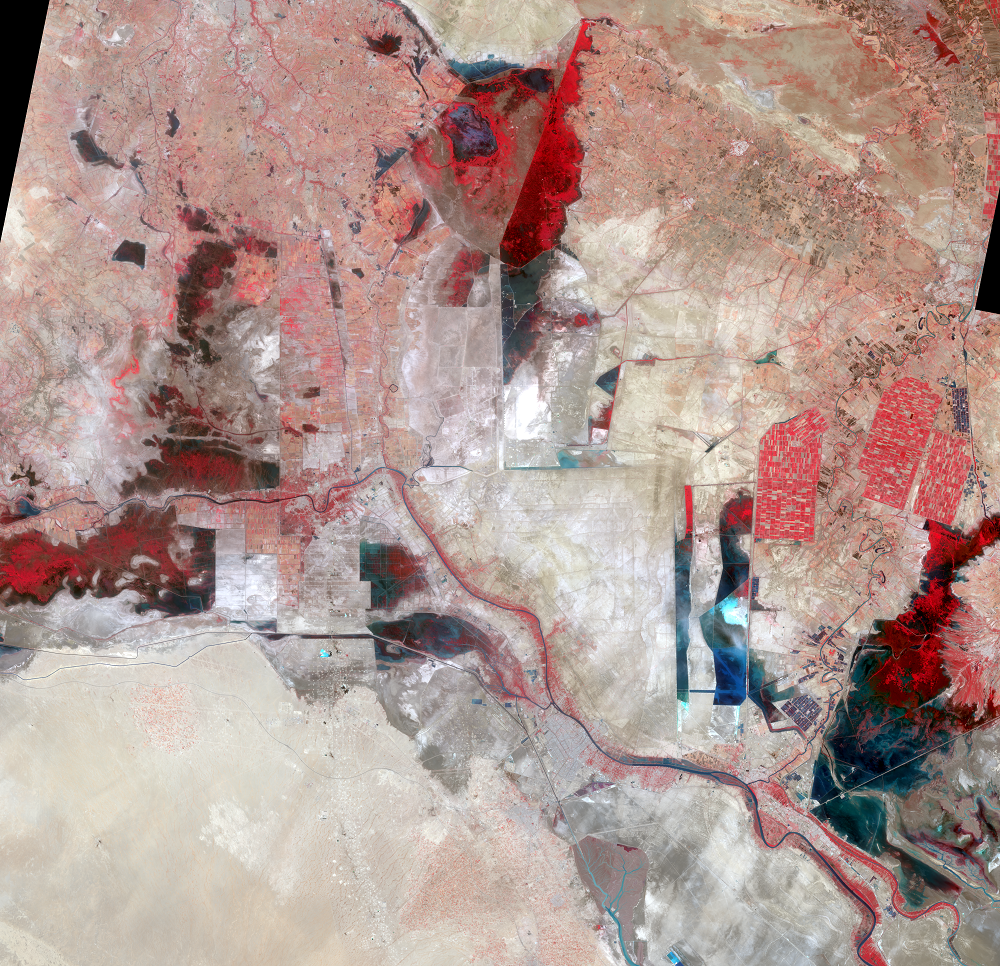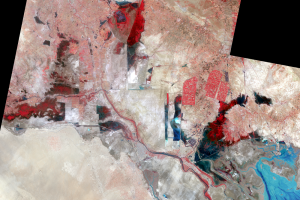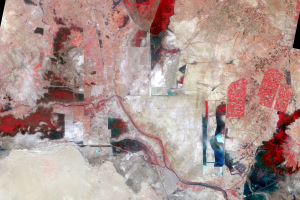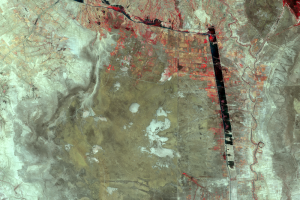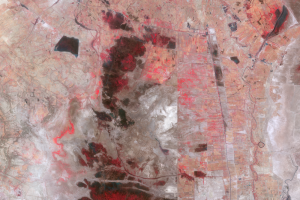
About the Marshes
Earth Resources Observation and Science (EROS) Center - Earthshots
All of the water that keeps the Mesopotamian Marshes alive comes from the Tigris and Euphrates rivers. Those rivers originate from precipitation in the Anatolian highlands of Turkey and the Zagros highlands of Iran, which occurs mostly in winter as snow. The snowmelt then provides—historically, at least—a flooding pulse downstream every spring. The land flattens out in southern Iraq, where the rivers slow and drop sediment, meander, and split into branches before flowing into the Persian Gulf.
The Mesopotamian marshlands absorb the excess water and expand in the spring, then shrink in the summer. That’s the normal seasonal pattern.
In the 1960s, the estimated spring extent of the marshes was 15,000–20,000 square kilometers. The vast marshland is vulnerable to drought and international conflict.

